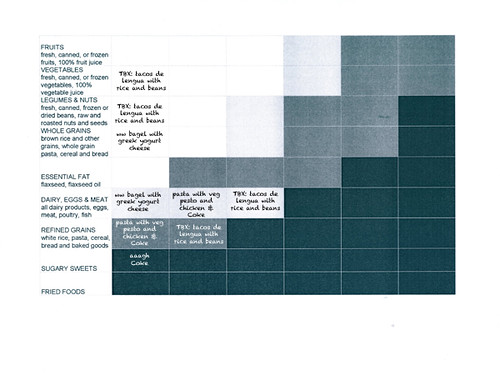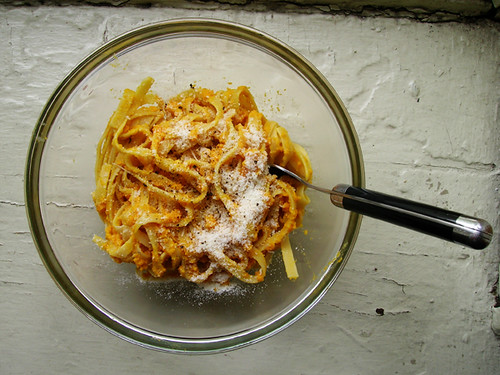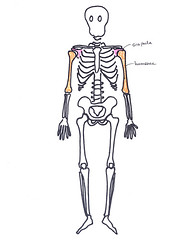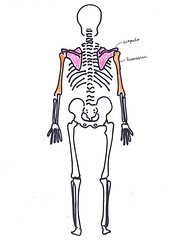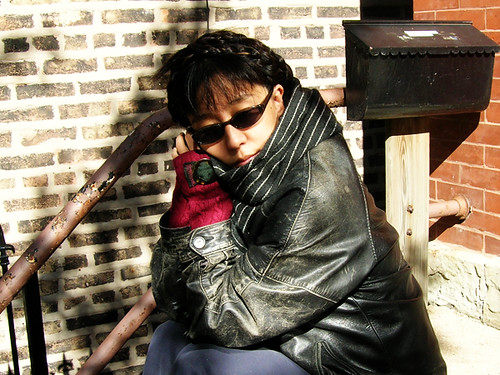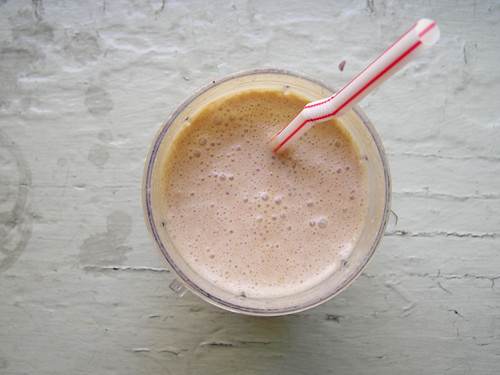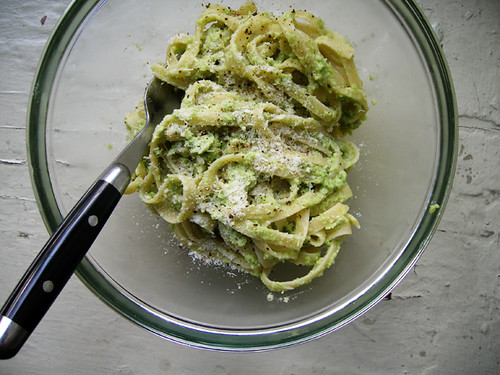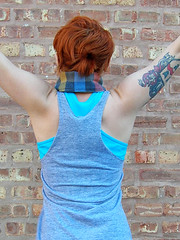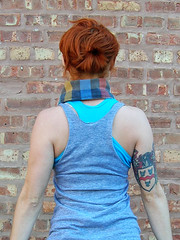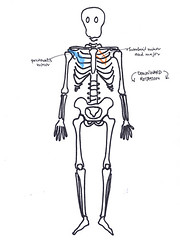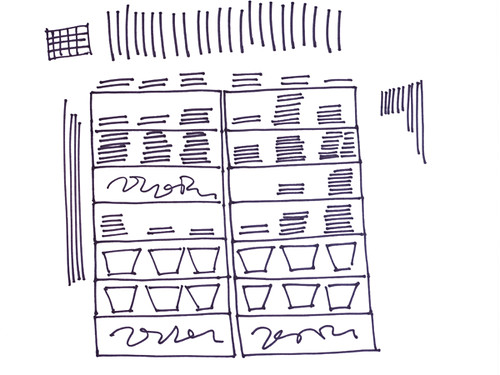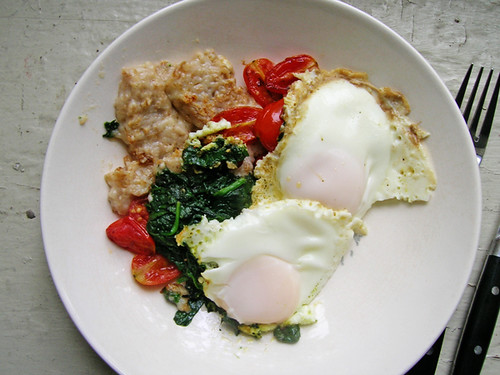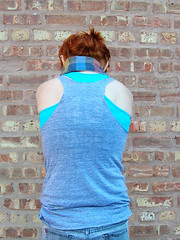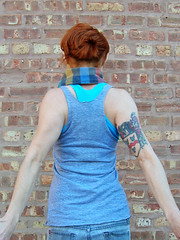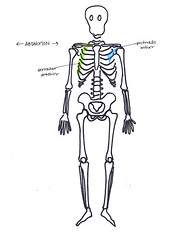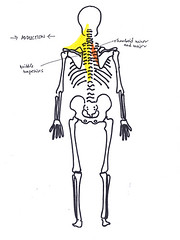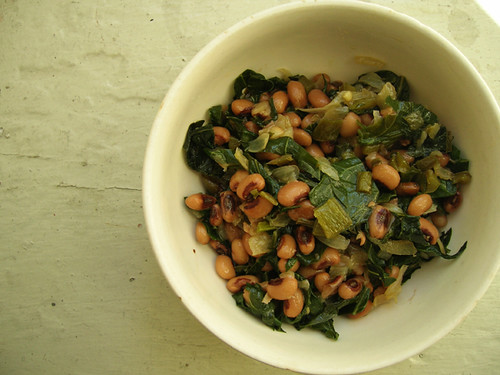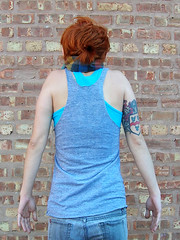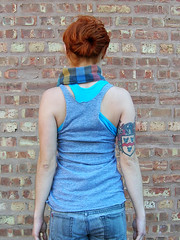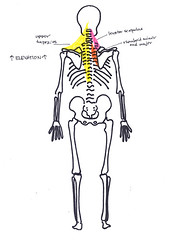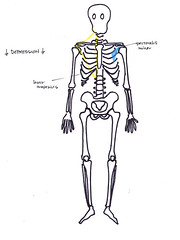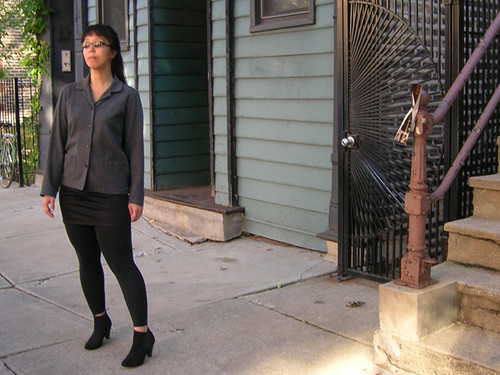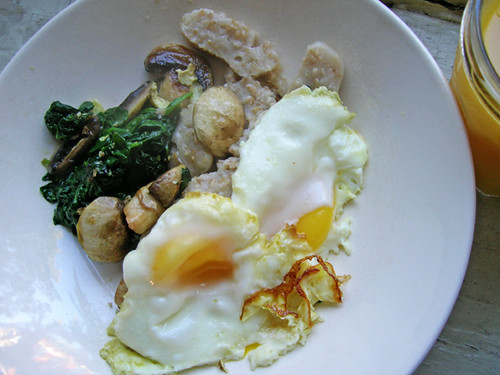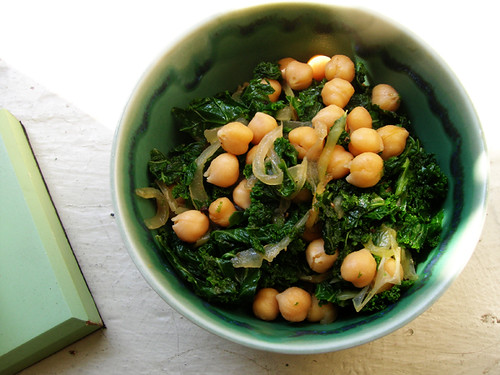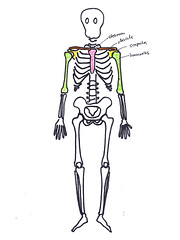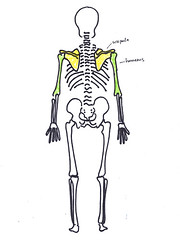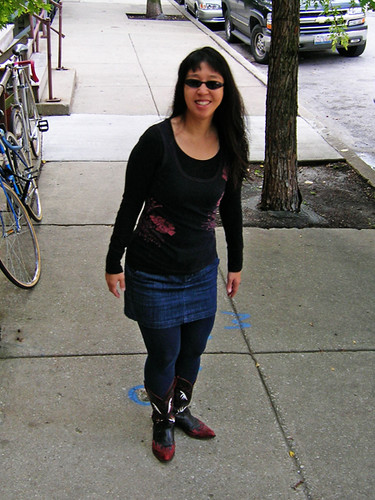It's another good thing that I got Biggie for these pictures, because flexion and extension are movements in the sagittal plane—i.e., from front to back. So in a drawing they're like 3-D, like coming out at you, and that's a bit beyond me to draw. I have slightly indicated their directions with arrows on my skeletons, but it's easier to get if you just look at the photos.
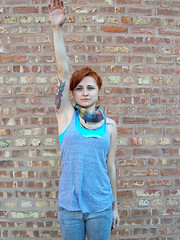
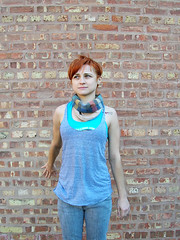
What movements happen at this joint?
Technically flexion is when the angle between two bones is decreased by moving them toward each other, and extension is when the angle is increased by moving them away from each other. Which is easy enough to picture at the elbow, flexion is when you move your forearm toward your upper arm and extension is when you move your forearm away from your upper arm. There has to be another definition for when the two bones are already perpendicular if that's the right word, though. Like your scapula and your humerus or your pelvis and your femur, what angle are we talking about? But anyway at your shoulder and your hip, flexion is bringing your humerus or femur forward and extension is bringing it back.
Remember that movements and muscle groups tend to occur in pairs, one to do and the other to undo. So extension is returning to neutral from flexion, and in the picture above Biggie is actually hyperextending her arm past neutral, which you can do at the shoulder and hip but not, I don't think, at the elbow or knee.
What muscles make these movements happen?
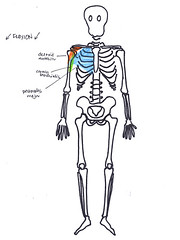
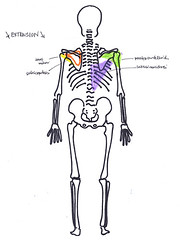
The muscles that flex your upper arm are your anterior deltoid, coracobrachialis and pectoralis major. Your deltoid is actually three muscles that form a cap over your shoulder, the anterior deltoid covering the front, the middle deltoid covering the side, and the posterior deltoid covering the back. Your coracobrachilalis is a small muscle that attaches from the coracoid process of the scapula to the inside of your upper arm. When you're like, woah did I really pull my armpit muscle? I think that's your coracobrachialis. Your pectoralis major is a giant breastplate of muscle that attaches from your collarbone, sternum, ribs, and also your obliques to your upper arm.
The muscles that extend and hyperextend your upper arm are your teres minor, subscapularis, posterior deltoid, teres major, and latissimus dorsi. Teres minor and subscapularis are two of four rotator cuff muscles, which we will talk about about when we talk about internal and external rotation. Teres minor attaches from the upper part of your scapula to the back of your humerus, whereas teres major attaches from the lower part of your scapula to sort of under your arm. Latissimus dorsi like trapezius is a giant backplate of muscle—traps are on top, lats are lower.
Makes sense, right? If muscles in the front contract, they pull your arm forward. If muscles in the back contract, they pull your arm back.
What exercises make these muscles work?
Pushups, pullups, rope climbing and throwing flex and extend the upper arms to work your anterior deltoid, coracobrachialis and pectoralis major, and your posterior deltoid, teres major and latissiumus dorsi. A tennis serve is a really good example of flexing and extending the upper arm. Rowing and pulldowns also work the teres major and latissimus dorsi for upper arm extension.
